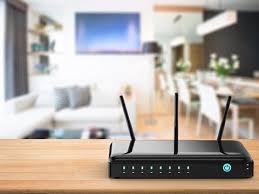
Chapter 1: Introduction to Routers
A router is a fundamental device in networking that serves as a gateway to connect multiple networks together, such as home networks or enterprise networks. It facilitates data packet forwarding between different networks and ensures efficient communication.
Routers operate at the network layer (Layer 3) of the OSI model and utilize routing tables to determine the best path for forwarding data packets based on destination IP addresses.
Chapter 2: Importance of Router Configuration
Router configuration is crucial for optimizing network performance, ensuring security, and enabling specific network functionalities. By configuring routers, network administrators can:
- Set up network addresses and routes.
- Implement security measures such as firewalls and access control lists (ACLs).
- Manage Quality of Service (QoS) to prioritize network traffic.
- Enable Virtual Private Network (VPN) connections for secure remote access.
- Monitor and troubleshoot network issues effectively.
Chapter 3: Common Router Configuration Steps
Configuring a router typically involves accessing its web-based management interface or command-line interface (CLI) and performing tasks such as:
- Setting up basic network parameters (IP addresses, subnet masks).
- Configuring DHCP (Dynamic Host Configuration Protocol) for automatic IP address assignment.
- Creating and managing user accounts and access rights.
- Updating firmware and software for enhanced security and performance.
- Implementing network segmentation and VLANs (Virtual Local Area Networks).
- Enabling and configuring wireless networking (Wi-Fi) settings.
Chapter 4: Router Security Best Practices
Securing routers is essential to prevent unauthorized access, data breaches, and network disruptions. Best practices include:
- Changing default login credentials and using strong passwords.
- Enabling encryption protocols such as WPA2 or WPA3 for wireless networks.
- Disabling unused services and ports to reduce attack surface.
- Regularly updating router firmware to patch vulnerabilities.
- Implementing firewall rules and access control policies.
- Monitoring network traffic for anomalies and potential threats.
Chapter 5: Future Trends in Router Technology
The evolution of router technology continues to focus on enhancing performance, scalability, and security. Emerging trends include:
- Integration of Artificial Intelligence (AI) for intelligent network management.
- Adoption of Software-Defined Networking (SDN) for centralized network control.
- Deployment of 5G networks and Internet of Things (IoT) connectivity.
- Enhanced cybersecurity measures to combat advanced threats.
- Development of mesh networking for seamless coverage and reliability.
- Green networking initiatives for energy-efficient routers.
Chapter 6: Conclusion
Routers play a pivotal role in modern networking by providing connectivity and ensuring data transmission efficiency. Understanding router configuration principles and implementing security best practices are essential for maintaining robust and secure network infrastructures.
As technology advances, routers will continue to evolve to meet the demands of increasingly interconnected and digitalized environments, driving innovation in network connectivity and security.
Chapter 7: Router Price in India
When considering purchasing a router in India, prices can vary widely based on several factors:
- Brand and Model: Well-known brands like TP-Link, Netgear, D-Link, and Cisco offer a range of models catering to different needs. Higher-end models with advanced features generally command higher prices.
- Features and Specifications: Key features impacting prices include Wi-Fi standards (such as 802.11ac or Wi-Fi 6), number of LAN/WAN ports, presence of USB ports for file sharing, and advanced security protocols.
- Performance Metrics: Factors like data transfer rates (measured in Mbps or Gbps), Wi-Fi range (in square feet or meters), and simultaneous device support affect the cost. High-performance routers designed for gaming or large households typically cost more.
- Additional Functionalities: Routers offering extras like parental controls for content filtering, guest network support, and compatibility with smart home devices often come at a premium.
As of the latest updates, router prices in India can broadly range:
- Entry-level Routers: Basic models suitable for small apartments or homes with moderate internet usage are priced between ₹1,000 to ₹3,000.
- Mid-range Routers: These include dual-band routers with better coverage and faster speeds, typically priced from ₹3,000 to ₹10,000.
- High-end Routers: Advanced routers with tri-band Wi-Fi, MU-MIMO technology, and extensive range can range from ₹10,000 to ₹50,000 or more, depending on the brand and specifications.
Market trends indicate a growing demand for routers equipped with the latest Wi-Fi standards like Wi-Fi 6 (802.11ax), which promise enhanced performance and efficiency in handling multiple devices simultaneously.